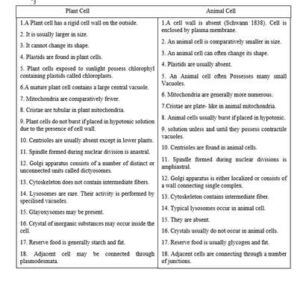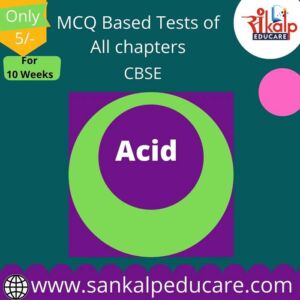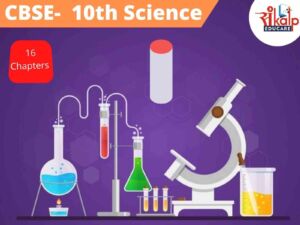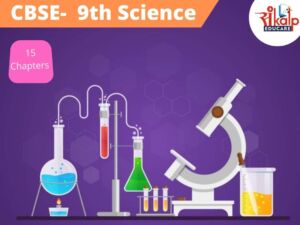Plant Cells
- A Plant cell has a rigid cell wall on the outside.
- It is usually larger in size.
- It cannot change its shape.
- Plastids are found in plant cells.
- Plant cells exposed to sunlight possess chlorophyll-containing plastids called chloroplasts.
- A mature plant cell contains a large central vacuole.
- Mitochondria are comparatively fewer.
- Cristae are tubular in plant mitochondria.
- Plant cells do not burst if placed in a hypotonic solution due to the presence of a cell wall.
- Centrioles are usually absent except in lower plants.
- Spindle formed during nuclear division is anastral.
- Golgi apparatus consists of a number of distinct or unconnected units called dictyosomes.
- Cytoskeleton does not contain intermediate fibres.
- Lysosomes are rare. Their activity is performed by specialised vacuoles.
- Glayoxysomes may be present.
- Crystal of inorganic substances may occur inside the cell.
- Reserve food is generally starch and fat.
- The adjacent cell may be connected through plasmodesmata.
Animal Cells
- A cell wall is absent (Schwann 1838). The cell is enclosed by a plasma membrane.
- An animal cell is comparatively smaller in size.
- An animal cell can often change its shape.
- Plastids are usually absent.
- An Animal cell often Possesses many small Vacuoles.
- Mitochondria are generally more numerous.
- Cristae are plate-like in animal mitochondria.
- Animal cells usually burst if placed in hypotonic.
- solution unless and until they possess contractile vacuoles.
- Centrioles are found in animal cells.
- Spindle formed during nuclear divisions is amphiastral.
- Golgi apparatus is either localized or consists of a wall connecting a single complex.
- Cytoskeleton contains intermediate fibre.
- Typical lysosomes occur in animal cells.
- They are absent.
- Crystals usually do not occur in animal cells.
- Reserve food is usually glycogen and fat.
- Adjacent cells are connecting through a number of junctions.

Difference between Animal And plant cell
Conclusion: The common difference between Animal cells and Plant Cells. It will help for all competitive exams and academic years. stay connected for new blogs and updates.





 Total Users : 8537
Total Users : 8537

















Leave A Comment
You must be logged in to post a comment.